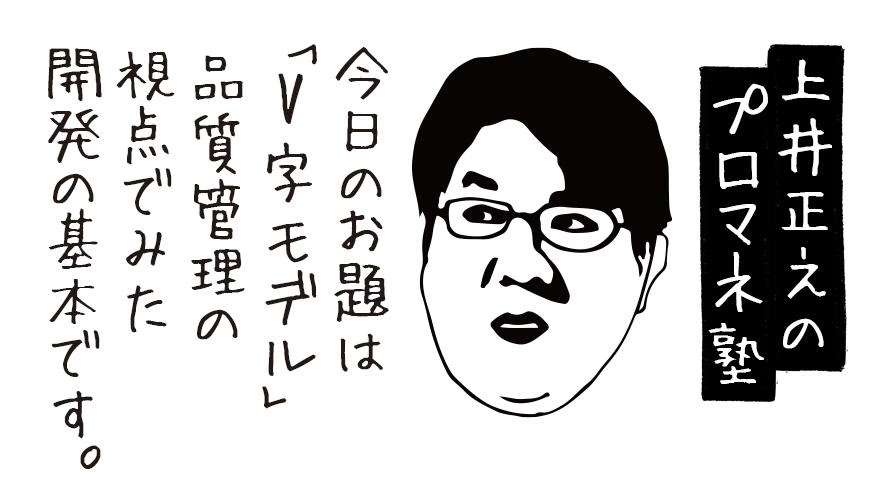こんにちはクリエイティブ部の上井です。
主に、システム開発や連携をともなうようなサイト構築で、プロジェクトマネージャー(以下:プロマネ)を担当していますが、この1月から、クリエイティブ部部長を拝命しました。
クリエイティブ部では、多くのお客様のサイト運用を手がける運用チームと、主にBtoBサイト制作のディレクション業務を行なうディレクションチームがあり、20名ほどのメンバーが、日々お客様とともにさまざまな課題の解決に奮闘しています。
私は彼らに、製造、建築・土木設計、システム開発の現場で経験したプロジェクト管理の考え方を伝えようと、月2回、勉強会を開くことにしました。
この連載では、その勉強会で伝えたことを軸に紹介していこうと思います。
連載目次
#01 プロジェクト成功の鍵は「V」にあり〜品質管理の視点でみた開発の基本はV字モデル〜(今回)
#02 WBS構築について 〜6月公開予定〜
#03 品質管理、品質保証について 〜8月公開予定〜
#04 QCD(Quality, Cost, Delivery) 〜10月公開予定〜
#05 プロジェクトの前後を知ろう 〜12月公開予定〜
第1回目のお題は、開発工程モデル。プロジェクトを計画どおりに進めるために、ソフトウェア開発分野で体系化された、開発手順の基本についてお話したいと思います。
1, プロジェクトとは何か?
プロジェクトマネジメント協会(PMI)が制定する『プロジェクトマネジメント知識体系ガイド(PMBOK)』では、
プロジェクトとは、独自のプロダクト、サービス、所産を創造するために実施する有期性のある業務
と定義されています。
決められた期間で目的を達成する、定型でない業務は大小にかかわらず「プロジェクト」といえます。
プロジェクトを計画どおりに進めるためには、成果物と、そこに至る過程を明確にイメージすることが重要です。
2, 開発工程モデルの基本
システム開発の分野でも、モノサスが手がけるWeb制作の分野でも、プロジェクトはいくつもの工程を経て完成させることになります。
これらの工程を計画し、管理するためにシステム開発の分野で標準化された作業手順が、開発工程モデルです。
まずは開発工程モデルの基本、ウォーターフォールモデルと、V字モデルについてご紹介します。
2-1 ウォーターフォールモデル
ウォーターフォールモデルは、プロジェクトの各工程を時系列に並べる最も基本的な開発工程モデルです。
上流工程から下流工程へ「要件定義」「基本設計」「詳細設計」「制作・開発」「テスト」…などの各工程を、水が上流から下流に流れるように整理します。
ウォーターフォールモデルでは、工程ごとの成果物を定義し、その成果物の完成をもって各工程が終了します。そして、この成果物を前提条件として、次の工程に進みます。
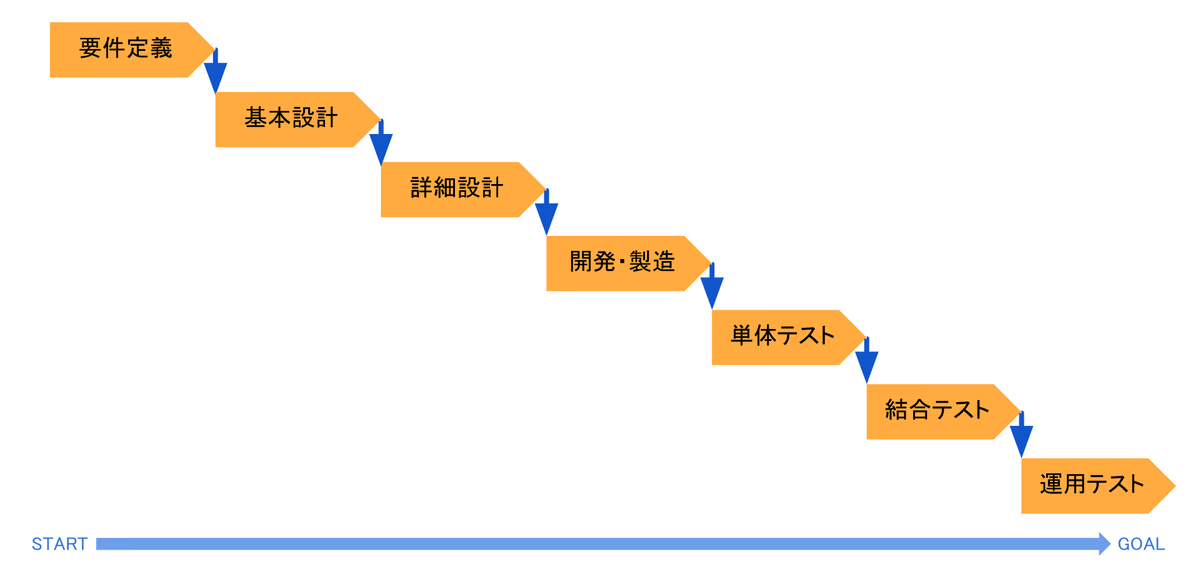
ウォーターフォールモデル
2-2 V字モデル
ウォーターフォールモデル図の「開発・製造」工程を折り返しとして、左側に設計工程、右側にテスト工程をV字に配置するのがV字モデルです。
左側の設計工程を「品質の埋め込みプロセス」、右側のテスト工程を「品質の確認・検証プロセス」と位置付けられ、V字の左右で同じ高さにある設計工程とテスト工程が対となり、どの設計内容に基づいてテストを行えばよいのかがひと目で理解できます。
例えば、コーディング制作の成果物のチェックは「単体テスト」となりますが、ここでは「詳細設計」の設計内容と合致しているかを検証することになります。
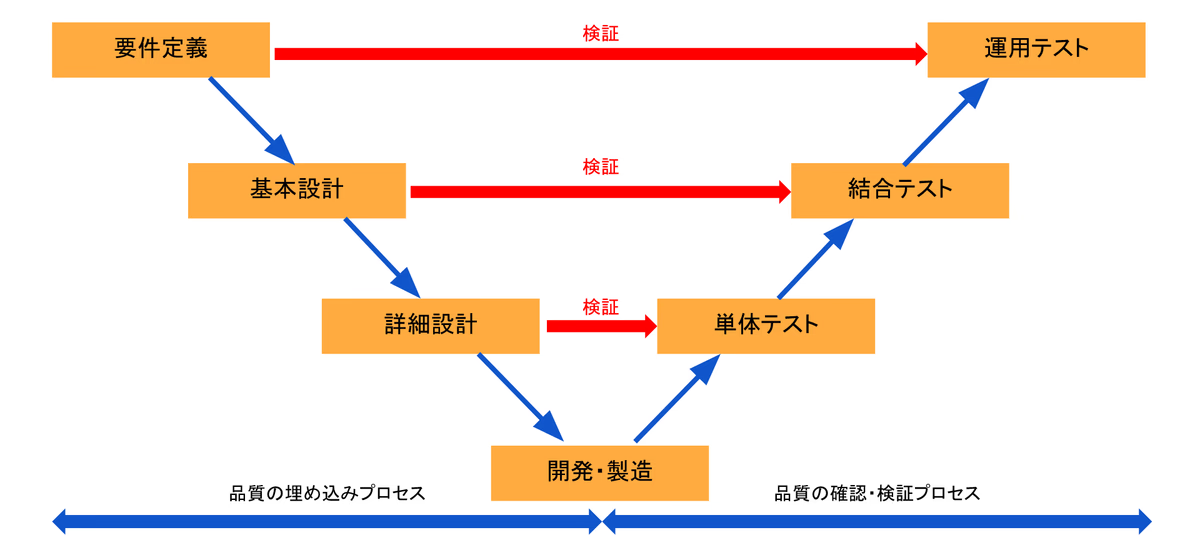
V字モデル
3, ウォーターフォールモデルとV字モデルの使い分け
3-1 プロジェクトの計画、見積りは、ウォーターフォールモデルでチェック
ウォーターフォールモデルでは、基本設計は「要件定義書」を基に、詳細設計では「基本設計書」を基に……、という具合に、前の工程の成果物を前提に、次の工程の作業を行います。
ウォーターフォールモデルでは、プロジェクト全体の工程を明確にし、工程ごとの成果物を定義するので、以下の特徴を持ったモデルだと言えます。
- 全体規模を把握しやすい
- 工程ごとの担当、責任範囲を明確に分けやすい
-
進捗管理を行いやすい
そのため、プロジェクト着手前、着手時に行う、全体計画の立案や見積りの作成において、プロジェクトの規模や、要員のスキルセットを把握する際には、このモデルでチェックするのが良いでしょう。
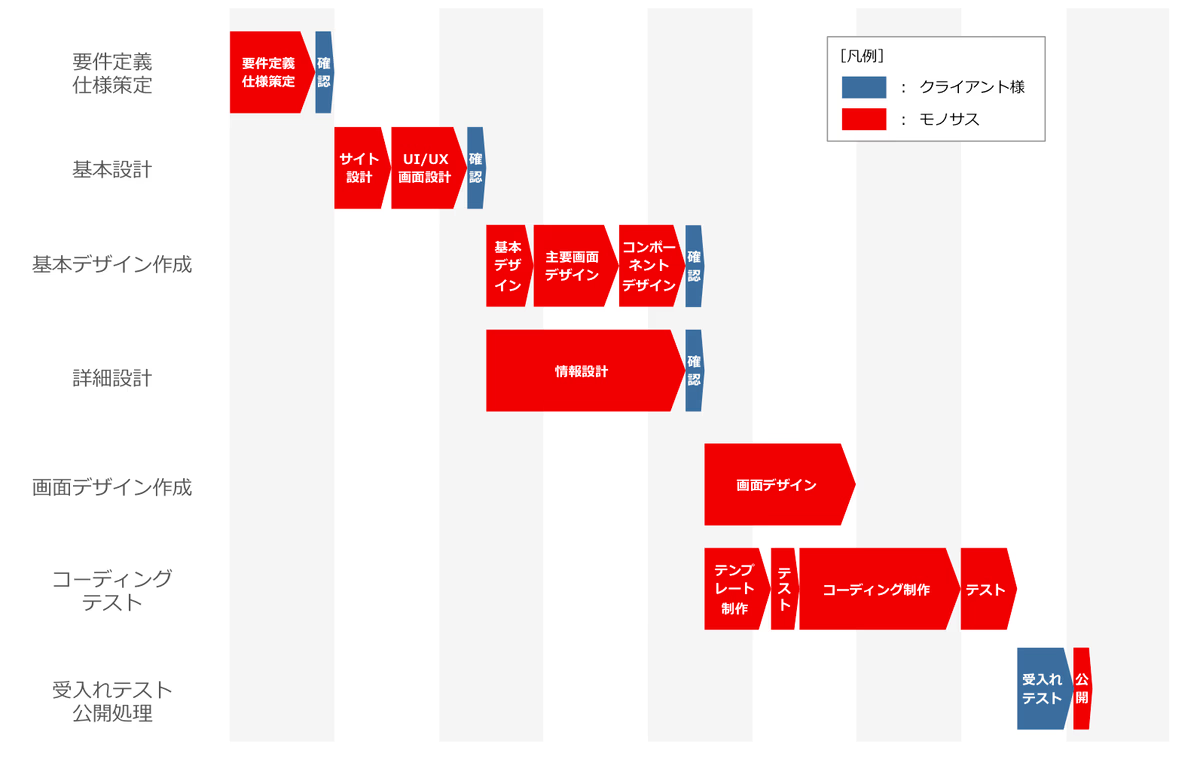
ウォーターフォールモデル→スケジュール
3-2 品質管理は、V字モデルを常に意識する
制作での品質管理の精度を保つためには、何を基準に評価・検証を行うのかを明確にすることが肝心です。
評価・検証の対象となる設計工程が明確なV字モデルを意識することが、品質管理の精度向上につながると考えています。
また、制作の過程で、前提条件の定義もれや誤りが見つかった場合に、どの設計工程に立ち返る必要があるのかを判断するのにもV字モデルを用いることが適切です。
4, V字モデルの問題点って?
4-1 PDCAサイクルは新しく、V字モデルは古いのか?
最近よく聞く「PDCAサイクル」。PDCAサイクルは新しく、V字モデルは古い開発モデルなのでしょうか。
PDCAサイクルとは、Plan(計画)→ Do(実行)→ Check(評価)→ Act(改善)の 4段階を実施し、1周したら最後のActを次のPDCAサイクルにつなげて、螺旋を描くように業務改善を繰り返す開発モデルです(下図左側)
これは実はV字モデルに当てはめることができます。
たとえば、制作の品質向上を目的とした場合、Check(評価)の基準は何か? に着目してみます。対象となるPlan(計画)と照らし合わせて検証を行うことになります。
品質管理の視点でPDCAサイクルを捉えるならば、時系列に沿って、V字を繰り返すものと考えられるのではないでしょうか。適切にCheck(評価)を実施することが、より効果的な Act(改善)、Plan(計画)に結びつくと考えられるからです。

PDCAサイクル

V字モデルを時系列に並べたPDCA
4-2 プロジェクトが硬直化する?
ウォーターフォールモデル、V字モデルでは、テスト工程がプロジェクト終盤に位置するため、要件定義の漏れや設計ミスに起因する不具合が見つかった場合に、手戻りが大きくなったりプロジェクトの混乱を引き起こしやすいと言われますが、そうでしょうか。
プロジェクト全体を一つのV字と捉えずに、各工程ごとにV字を意識し、成果物を上流工程に基づき検証を繰り返すことで設計工程の品質を向上し、上記のような事態を避けることができると思います。
大小様々なV字を意識することで、検討と検証を繰り返し、設計品質を向上させることが可能です。
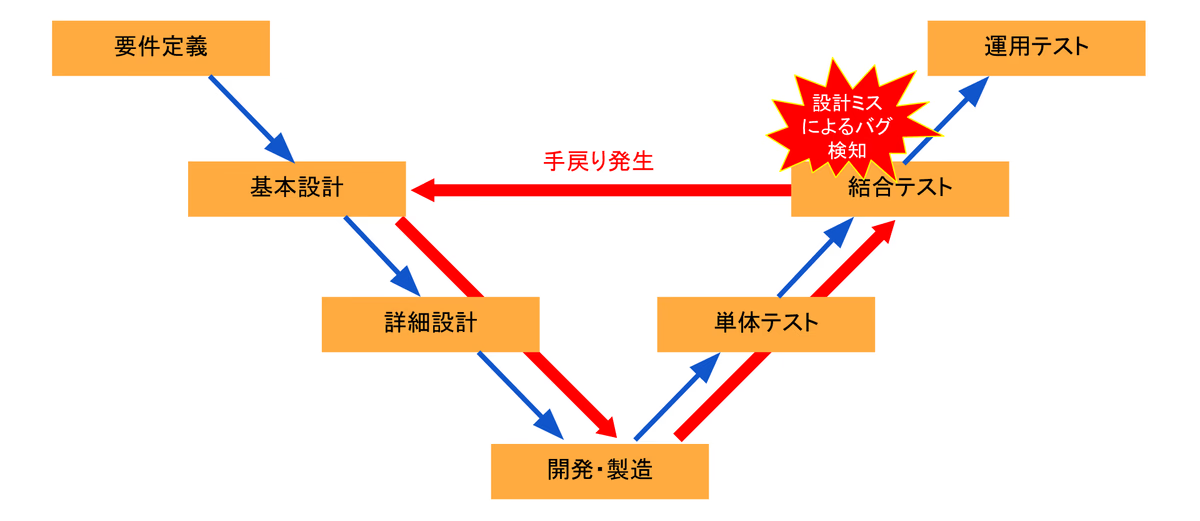
V字モデルは手戻りが大きくなる?
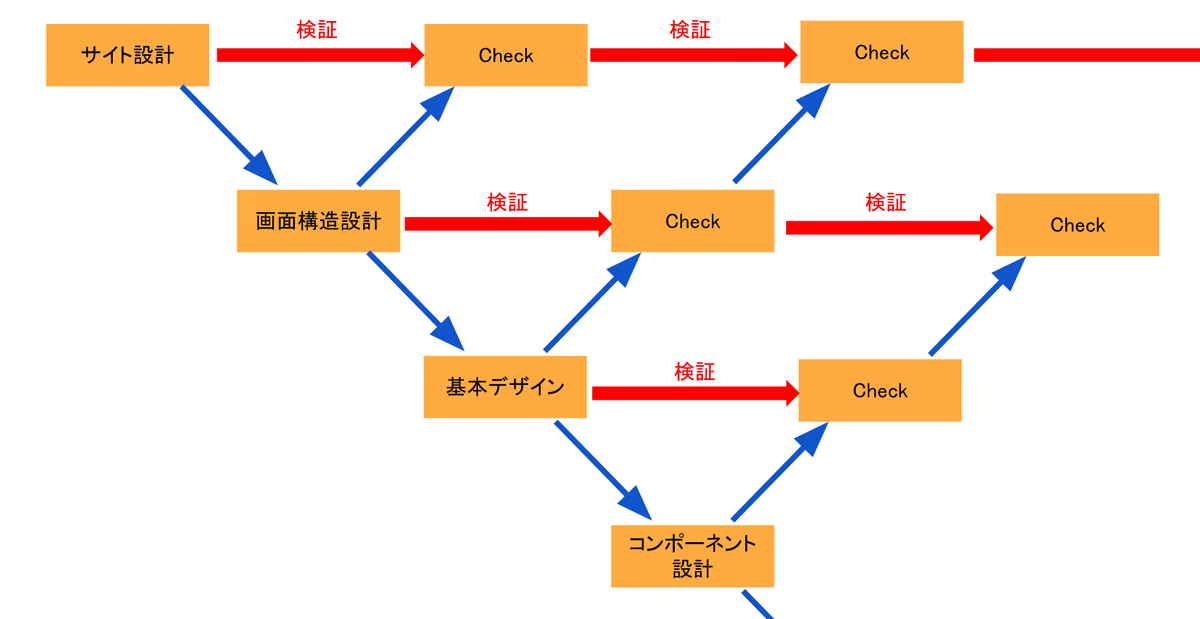
各工程ごとにV字モデル
5, 品質管理の基本はV字モデル
品質管理は、上流工程である設計段階での品質の作り込みと、テスト・検証の基準を明確にすることが重要です。
プロジェクト全体、各工程間に大小のV字モデルを当てはめて、検討と検証を行うことで、品質管理をシンプルに確実に行うことができると思います。
第1回目は、品質管理の側面から開発工程モデルについてお話ししました。
次回は WBS構築(Work Breakdown Structure)について触れていきます。
WBS構築とは、開発工程モデルに沿ってプロジェクトを工程に分解することです。スケジュールや、見積りのベースとなるこの作業は、プロジェクトの全体像をイメージし自信を持ってスタートさせるための基盤となるものです。
それではまた、6月に。
